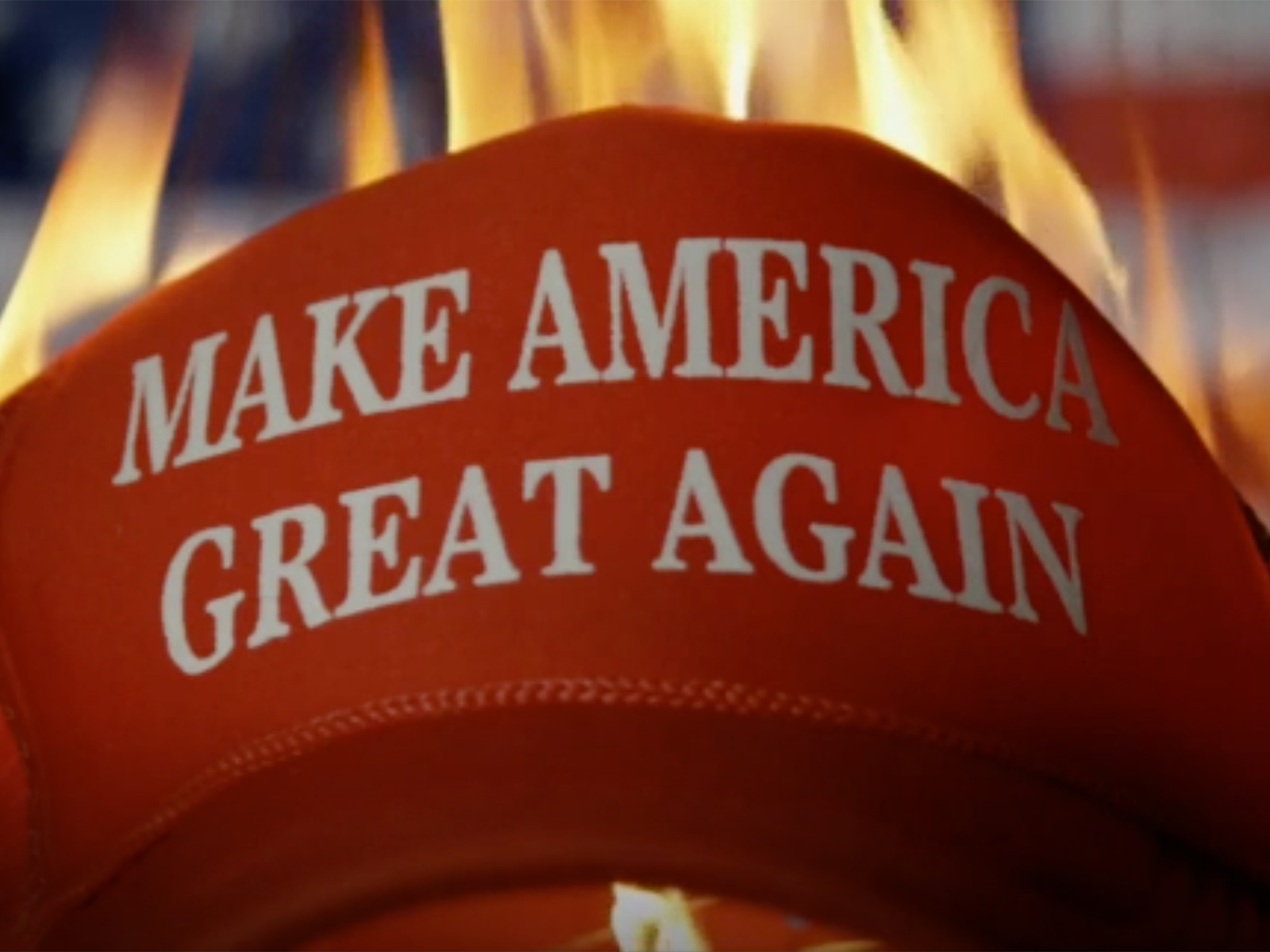
- Film
Docs: “The Boys in Red Hats”
In January 2019, outside the Lincoln Memorial, cameras captured an interaction between a group of teenage boys from Kentucky’s Covington Catholic, in Washington D.C. with their school for the March for Life, and Native American activist Nathan Phillips. The video, and in particular images of smiling student Nick Sandmann standing in front of Phillips as the latter drummed and chanted, went viral. First, on social media, and then within the cable TV news ecosystem, this event became a cultural Rorschach test that director Jonathan Schroder attempts to unpack in a new documentary film.
The rub, featured and foregrounded, is that Schroder is himself an older alumnus of the same elite private all-boys high school. This fact, and his complicated relationship with his alma mater, provide The Boys in Red Hats a noteworthy, differentiating hook in regards to its subject matter. It also unfortunately stagnates and colors the film’s fitful and frustratingly circuitous engagement with broader issues of entitlement, diversity, media framing and portrayal, and corroded civic responsibility that are crucial to a more nuanced understanding of the event.
As with almost all great stories, the Lincoln Memorial incident is one awash in moral grays and informed by the eye of the beholder. This begins with the primary photo, and the debate surrounding it, which affords interpretations of Sandmann’s expression anywhere from a condescending smirk of protected elitism to a mere manifestation of adolescent nervousness, and extends to how one views a wildly demonstrative Greek chorus exhorting one of their own in said situation.
Longer, unedited video footage, though, shows the Covington boys, awaiting the return of their bus with adult chaperones, being first antagonized by a small handful of Black Israelite activists, and Phillips then, perhaps initially intending to diffuse the tension of that moment, approaching with his drum. All manner of small misrepresentations and outright lies flowed from there, inclusive of actions of the teenagers, but especially regarding Phillips’ background and personal history. The fallout would spill over op-ed pages nationwide and even internationally, and include over $275 million in lawsuits filed by the Sandmann family against CNN, NBC, Washington Post, and other media outlets.
Schroder’s filmography spans the 2006 feature Jimmy and Judy and unscripted television, the latter in the form of Nat Geo Wild’s long-running The Incredible Dr. Pol, which focuses on the work of a rural Michigan veterinarian. This experience, and his own biography, help position him as a credible analyzer of the pipeline between so-called “middle America” and both Ivy League universities and other institutions of power and prestige.
Where Schroder’s movie most robustly succeeds – whether through smart curation, luck, or some combination of the two – is in the selection of several interviewees whose articulate and deeply thoughtful perspectives pull the viewer along. The Root contributor Anne Branigan, USC journalism professor Allissa Richardson, journalist Vincent Schilling, and Colby College professor Adam Howard all add tremendous value to The Boys in Red Hats. Together, they help center the discussion (or at least provide a parallel track for worthwhile pondering) around privilege and valuing the personhood and agency of others who might not look like you. Meanwhile, Schroder’s fellow CCHS alum Andy Becker, whose incandescent anger remains palpable throughout, also does a good job of laying bare reasonable issues with the broader culture of his alma mater, of which he views this incident as highly emblematic.
But if Schroder’s insertion of himself into the story is understandable, it also helps render The Boys in Red Hats more of a filmic individual therapy session than a finely honed piece of nonfiction filmmaking. Again and again, Schroder’s movie dawdles rather than lean forward. He devotes screen time to slow crawls through various Twitter messages, as well as discussions with his producer over their attempts at procuring various interviews. Simplistic animation, a woefully tired modern documentary device, also adds nothing to the proceedings here, and in fact, highlights some of the film’s more indulgent passages. Even more contextually relevant information – the roots of the Covington boys’ demonstrative chants in a pep rally culture, Schroder’s recollection and examination of a teacher physically assaulting him – takes too long to make its point, repeats itself, or both.
It’s 53 minutes before the movie gets around to addressing the fact that many, many of the Covington boys were wearing “Make America Great Again” hats and T-shirts in support of Donald Trump, a triggering quasi-endorsement of White nationalism to some. Back-burnering this issue (referenced by the very title!) for so long, feels much more than a haphazard structural editing choice, like a betrayal of any honest, or at least rigorous, line of intellectual or sociopolitical inquiry. Self-evaluation and reflective discovery are admirable traits in a person. They do not, however, automatically make for a profoundly meaningful shared journey.

